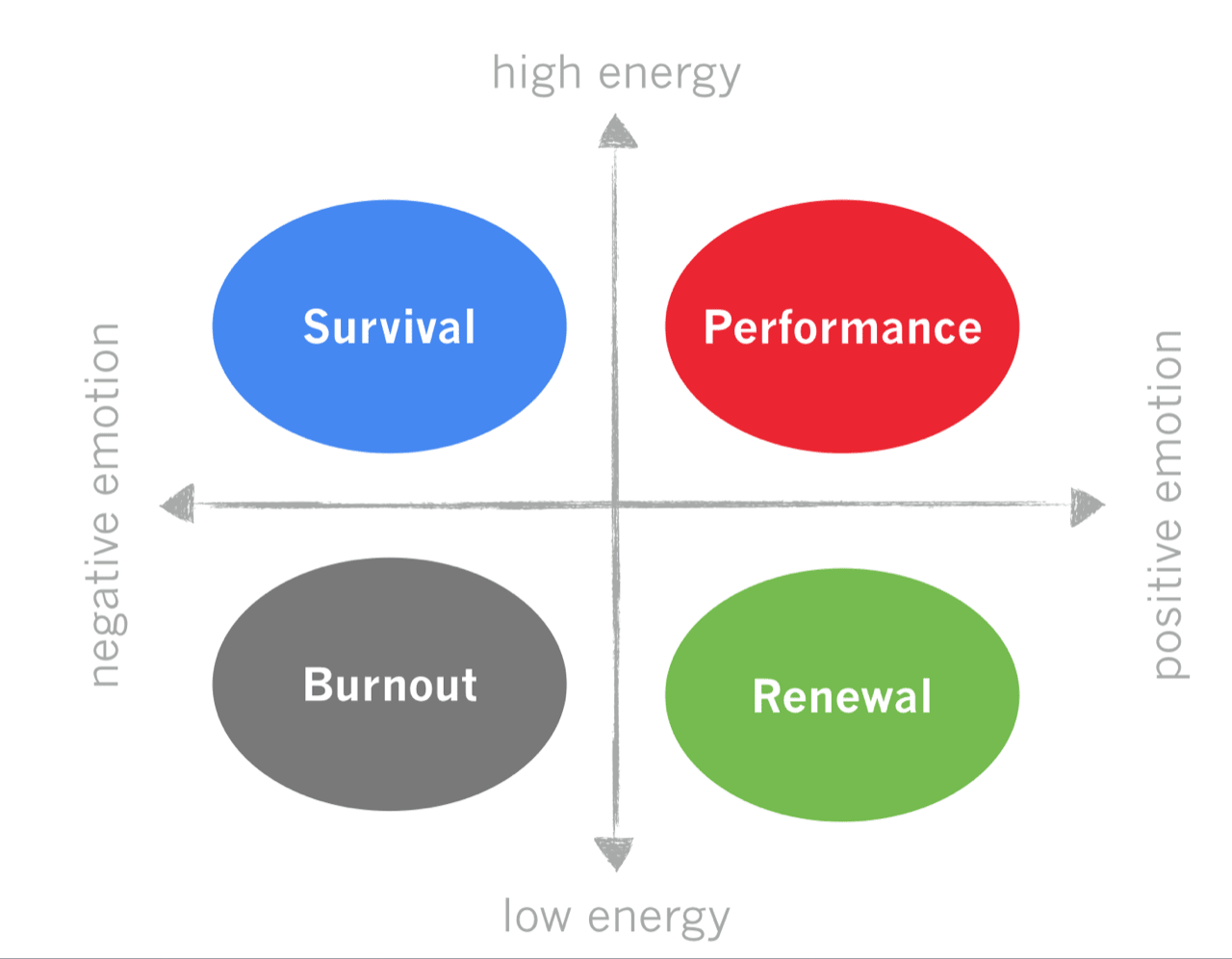3 minute read / Sep 17, 2014 /
Startup Best Practices 8 -Getting the Most from Your Team By Preventing Burnout
Startups are intense experiences. Driven by a burning passion to change some aspect of the world, startup teams push, push, push to grow as fast as possible. Without the right balance, though, teams burn out - a terrible outcome. One of the most important responsibilities of every startup’s management team is to shepherd their teams to maximize their performance and prevent burnout. But how?
Tony Schwartz founded The Energy Project, a consultancy that focuses on educating managers on how to manage their team’s energy, to maximize long-term team performance and well-being. The company works with Google, eBay and lots of other Fortune 500s. Schwartz wrote a book on the topic called The Power of Full Engagement. I haven’t read the book, but I’m a believer in one of the frameworks within it, the 2x2 matrix above.
Energy is marked on the y-axis and emotional state on the x-axis. Burnout, the worst-case scenario, occurs when people have negative emotions and low-energy. Many of us know this feeling well. The best place to be on the 2x2 is performance, when we have lots of energy and positive emotions about our work. Survival occurs when we are producing lots of work, but express negative emotions. And renewal is positive emotions, but low energy.
I’ve tended to cycle between survival and performance. I suspect many people in Startupland do too. But this isn’t the optimal quadrant-pair. Instead, and it might seem counter-intuitive at first, the better cycle is between renewal and performance. The renewal/performance cycle very sharply reduces the possibility of burnout, by reinforcing positive emotions.
To make use of this energy framework, a manager should routinely, even weekly, take stock of which quadrant the team is in. How is the team’s energy? How upbeat is the team? These sentiments can surface in many places, but often arise in one-on-ones.
To shift teams from the left-side of the matrix to the right side requires rebuilding positive energy. The Energy Projects divides energy into four types:
Physical: Is the team getting enough exercise and sleep? Are they eating well? Do they take regular breaks to recharge during the day?
Emotional: Does the team find the time to work on projects they enjoy? Do teammates regularly share appreciation for work well done?
Mental: Does the company provide the team an environment in which they can focus on their work? In which they can switch between reactive work and proactive thinking and long-term planning? Does the company respect work-life integration, if not balance?
Spiritual: Does the team feel committed to the vision of the business? Do they feel unified within their team? Does the company inspire them with a strong sense of purpose and act in ways consistent with their values?
By breaking down the team’s current state into these four buckets, managers can identify and address potential transitions burnout or to survival mode, keeping the team happier and more productive for the long term.
I like this framework because it provides tactical advice to managers on how to identify where their team may be. In addition, the responses fall pretty neatly out of the questions. Too little sleep? Time to reallocate work across the team or prioritize better. Not enough focus? Reduce meeting volume or concentrate meetings into chunks. Lack of commitment to the vision? Let’s spend some time with the CEO and some customers.
